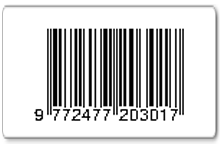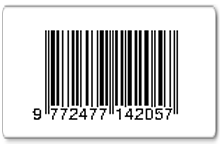THE DEVELOPMENT OF BIOTECHNOLOGY’S LEARNING INSTRUMENTS ORIENTED HIGHER-ORDER THINKING AND THE UTILIZATION OF NATURAL RESOURCES TUNDA'S ISLAND POTENTIAL
Abstract
Abstract
Science and technology learning should not just provide a collection of facts, laws and theories but rather is a process conducted by the students to acquire knowledge through interaction with the surrounding environment. The students are trained in scientific thinking critically, creatively and independently through active and meaningful learning process, for example by using the environment as a learning resource. This study aims to develop learning equipments oriented higher-order thinking skills (critical and creative) to explore the potential of biological resources of Tunda island, as a learning resource in the subject of Biotechnology. This study used research and development (R & D) method, which consists of the stages of analysis, design, validation and revision. Learning equipments that produced are RPS (lesson plans for 1 semester), the student worksheets (LKM), and evaluation (test) instruments. The results of the validation team of experts showed that the learning equipments are good categorized, with the values 77.14 for RPS, 85 for LKM, and 94 for instrument test. Criticisms and suggestions from the experts were used as the basis of revision, so that the learning equipments are eligible for learning.
Keywords: Research and Development, Tunda Island, Critical Thinking, Creative Thinking, Biotechnology Subject
Keywords
Full Text:
PDFReferences
Anderson, L.W and Karthwohl, D.R. 2001. A Taxonomy for Learning, Teaching and Assessing: A Revision of Bloom’s Taxonomy of Educational Objectives. Longman. New York.
Darus, R. F., et al.2014. Keanekaragaman hayati ekosistem pesisir di pulau Tunda, kabupaten Serang, Banten. Prosiding Pengelolaan Sumber Daya Kelautandan Perikanan Wilayah Pesisir dan Pulau-pulau Kecil Berkelanjutan Menuju Kedaulatan Maritim. Universitas Trunojoyo. Madura.
Herrington, J. and R. Oliver. 1999. Using situated learning and multimedia to investigate higher-order thinking.Journal of Interactive Learning Research. 10(1): 3-24.
Johnson, E.B. 2014. Contextual Teaching and Learning. Menjadikan kegiatan belajar mengajar mengasyikkan dan bermakna. Kaifa. Bandung.
Miri, B., B. David, and Z. Uri. 2007. Purposely teaching for the promotion of higher-order thinking skills: a case of critical thinking. Res Sci Educ. 37:353–369.
Paul, R., and L. Elder. 2004. Critical thinking and the art of close reading, part III. Journal of Developmental Education. 28. 36–37.
Rahayuni, G. 2016. Hubungan keterampilan berpikir kritis dan literasi sains pada pembelajaran IPA terpadu dengan model PBM dan STM. Jurnal Penelitian dan Pembelajaran IPA. (2) 2: 131-146
Riduwan. 2013. Belajar Mudah Penelitian untuk Guru-Karyawan dan Peneliti Pemula. Alfabeta. Bandung
Riska, N. P. Zamani, T. Prartono., & A. Arman. 2015. Konsentrasi timbal (Pb) pada pita tahunan karang Porites lutea di pulau Tunda, Banten. Jurnal Ilmu dan Teknologi Kelautan Tropis. 7 (1): 235-245.
Sugiyono. 2008. Metode Penelitian Pendidikan Pendekatan Kuantitatif, Kualitatif, dan R&D. Alfabeta. Bandung.
Trianto. 2009. Mendesain Model Pembelajaran Inovatif Progresif. Kencana Prenada Media Group. Jakarta
DOI: http://dx.doi.org/10.30870/jppi.v3i1.1085
Refbacks
- There are currently no refbacks.
Copyright (c) 2017 Jurnal Penelitian dan Pembelajaran IPA (Journal of Research and Science Learning)

This work is licensed under a Creative Commons Attribution 4.0 International License.
Jurnal Penelitian dan Pembelajaran IPA is licensed under a Creative Commons Attribution 4.0 International License
Copyright © 2023 Jurnal Penelitian dan Pembelajaran IPA. All rights reserved.






